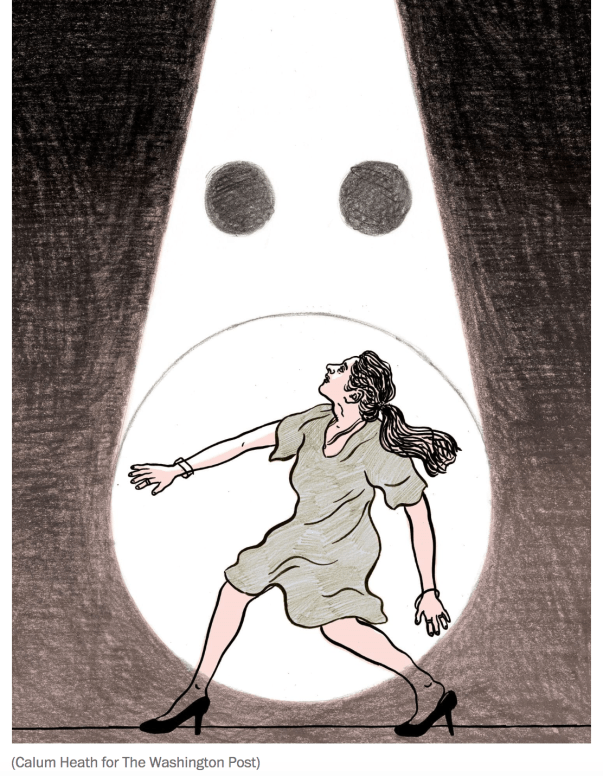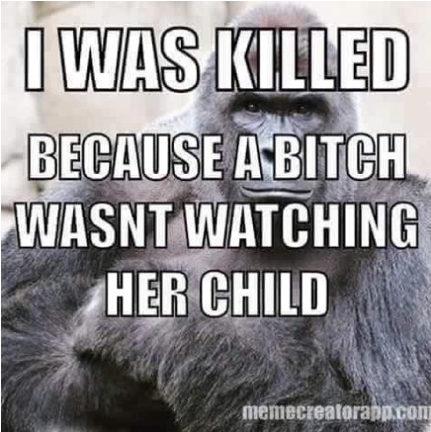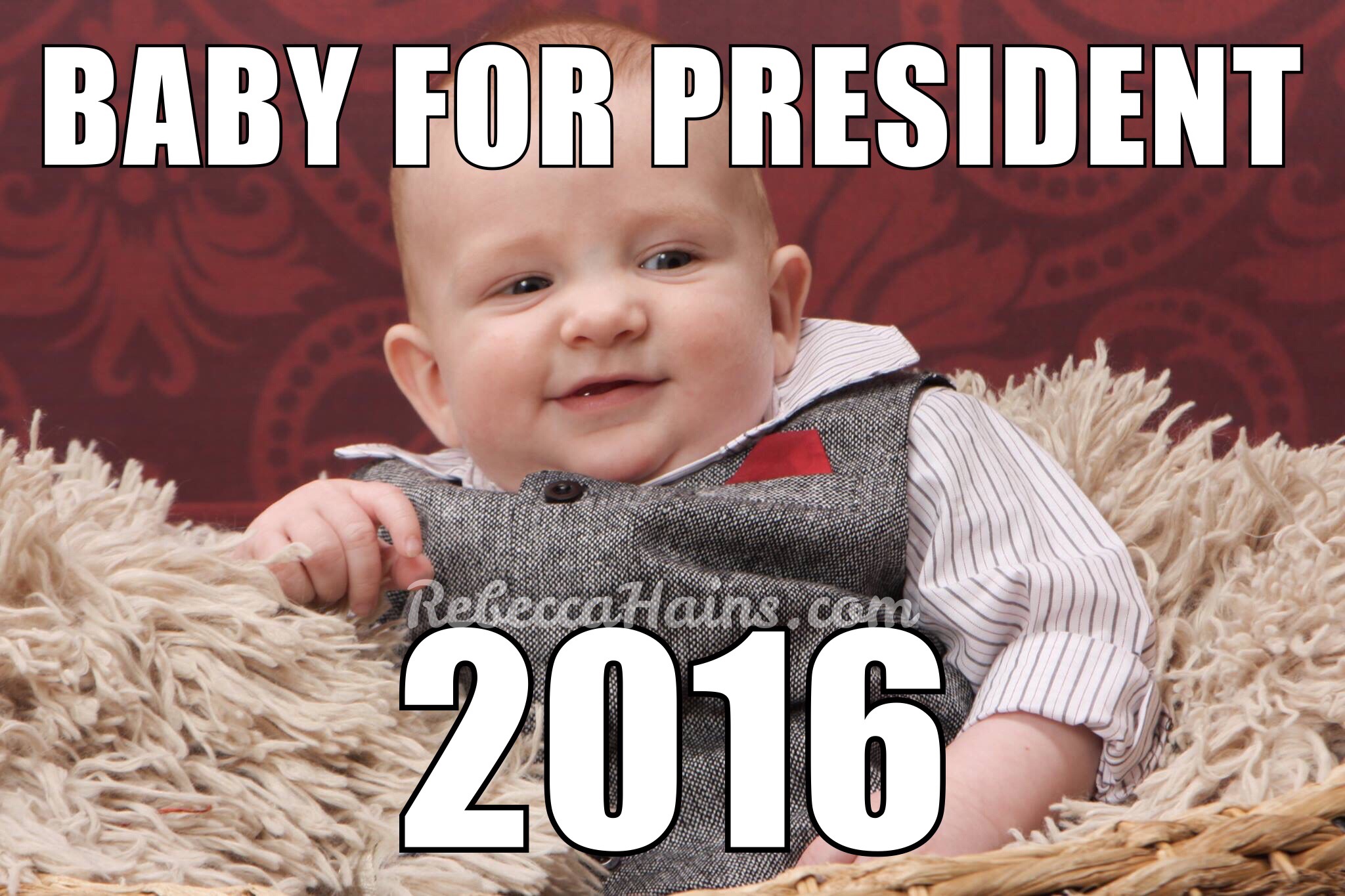Dr. Rebecca Hains
Author, professor and speaker | Children's media culture, media literacy, and media criticism

Dear fellow white people: Here’s what to do when you’re called racist.


Trump supporters say they’re “tired of being called racists.” At a recent rally in Cincinnati, the Atlantic reported, white attendees defended themselves against the charge by citing the “evidence”: They had donated money to help black foster children; they deeply loved their black and mixed-race grandchildren.
Shortly after rejecting the “racist” label, however, these same rallygoers made racist remarks to the journalist who interviewed them. Regarding Rep. Ilhan Omar (D-Minn.), who came to the United States as a Somali refugee, one woman offered: “I don’t want her stinkin’ Muslim crap in my country.”
Making racist remarks while claiming not to be racist seems paradoxical. President Trump himself is a case in point. “I am the least racist person there is anywhere in the world,” he told reporters last month, and he often name-checks black celebrity friends to support his contention. At the same time, he continues to take racist jabs at individuals and groups.
Even white people who consider themselves good allies of people of color can be unaware of their racial biases. From public figures to pundits to public intellectuals to politicians, it’s a pervasive, bipartisan, international problem. The white Democratic governor of Virginia, Ralph Northam, for example, distanced himself from a photo of a person in blackface on his 1984 medical school yearbook page by talking about how he practiced medicine. “I can tell you I treat everyone the same way,” he said. “Nobody has ever thought or accused me of being racist, and if and when I practice again, I will continue that same direction.” White actor Liam Neeson confessed that decades ago, after a friend reported that she had been raped by a black man, he felt a “primal urge” to retaliate by harming black men in general. Responding to the backlash, he said, “I’m not racist. If she had said an Irish or a Scot or a Brit or a Lithuanian, I know I would have had the same effect.”
So, if you are a white person and someone calls you racist, and the charge perplexes you, what should you do? As a white college professor who teaches courses on media and race at a diverse public university, here’s my advice.
Step 1: Recognize that what matters most is what happened just now.
You can be called out for racist remarks even if you have black friends and relatives you cherish, donated to anti-racist causes and marched for civil rights. People have a tendency to respond to an accusation of racism by sharing this kind of personal history. It’s such a widespread phenomenon that the New Republic once looked into the history of the “token minority best friend defense.” “The Colbert Report” satirized it time and again (“I need a new black friend,” Stephen Colbert’s character says in an extended riff). As Psychology Today reported on a study of this phenomenon, “The threat of appearing racist leads people to overestimate how much their past non-racist actions — like making friends with somebody of another race — are indicative of their non-racist attitudes.”
So stay in the moment. What matters is:
1. What you said
2. How it was received by those around you (as reflecting a racist bias) and
3. How you respond to those who identified racism in your words or actions.
Step 2: Remember the broader context.
Even if you know in your heart that you are not racist, remember: It is possible to have implicit (or unconscious) racial biases. While studies show that we are aware of our explicit, declaratory biases, some prejudices arise without thought, in snap judgments, making them harder for us to detect. That is why our implicit biases don’t necessarily “align with our declared beliefs or even reflect stances we would explicitly endorse,” as Ohio State’s Kirwan Institute for the Study of Race and Ethnicity puts it. The United States was built on the enslavement of black people, and some forms of structural racism persist in our laws and culture. If you grew up in the United States, you were socialized within this system. One recent study even found higher levels of implicit biases among people in states and counties that had more slaves in 1860 — suggesting that lingering inequalities in society can transmit historical forms of oppression, like slavery, into contemporary biases without our knowledge.
As a result, we have all developed biases that feel “natural” and “normal” but are grounded in racism. Recognizing this pattern can help make sense of being called racist when you feel certain that you are a good person.
Fortunately, data shows that people can overcome their socialization and reduce their implicit biases through various means. For example, MTV’s Look Different campaign, with input from the Kirwan Institute, has created an online bias cleanse program, a response to the question, “What can I do about bias?” It offers daily tasks for a week. But overcoming bias is a longer-term process that requires sustained work. If you’ve just been called racist, what should you do in the moment?
Step 3: Stay calm and ask for clarification.
Take a deep breath and pause after being called racist. You will probably feel attacked and defensive. Check those emotions and avoid argument.
Instead, apologize and consider asking someone — either the person who called you racist, or a trusted friend who understands racism and can chat with you about the situation — for help understanding what went wrong.
You can use language like this: “I didn’t realize that remark was racist. I am so sorry. Would you be willing to help me understand where I went wrong? I really want to learn and would be grateful.”
Important note: If possible, ask a white person to explain this to you. It isn’t the job of people of color to educate white people, and you are not owed a direct explanation, as much as you might like one. Don’t be entitled. Respect those boundaries. They’re healthy. Instead, explain what happened to a third party — one you trust will be insightful and honest. Taking ownership of the problem, ask for that person’s help in identifying and unpacking what you did wrong.
Step 4: Really listen to the answer(s) you receive.
Swallow your pride. It’s hard. Don’t interrupt or justify yourself; you’re not on trial. Your goal in this exchange is to listen and learn.
Being an open-minded, active listener is a useful interpersonal communication skill in many situations, but it often doesn’t come to us naturally. We can cultivate it. In Inc. magazine, Cathy Salit put it this way: “Do you have a friend or colleague you disagree with about something? Have a conversation in which (for once) you don’t try to convince them that they’re wrong, but instead find out everything you can about how they see the topic or issue.”
Also, don’t feel as if you have to instantly understand the explanation you’re offered. For example, it may include a reference to white privilege, but you may not feel privileged because of various struggles you have faced in your life. This is a common area of misunderstanding and conflict.
Step 5: Express gratitude — then get to work.
Be sure to thank the person who offers you an explanation. The fact that you were (1) called out and (2) offered an explanation may feel uncomfortable, but it is a valuable gift, and your discomfort is productive. Consider it as motivation: a growing pain that can spur you to think deeply about this new information, work to identify and overcome your harmful implicit biases, and help raise your fellow white people’s consciousness.
Tom Rademacher, an author and teacher, faced his own accusation this way: He explained that backlash from a community of black women on Twitter helped him realize that an imagined graduation speech he had published — in which he “playfully” taunted marginalized communities by saying that white people had mistreated them to “toughen them up” — was racist and harmful. “It was tough to read, all of it, but the pit in my stomach wasn’t there because anyone involved, most especially the women listed above, were being mean,” he wrote. “They are entirely right.”
Being a white anti-racist ally is not easy, but it’s important. Anyone can rise to the challenge — and pay it forward.
Rebecca Hains is a professor of media and communication at Salem State University, where she also serves as a faculty fellow for diversity, power dynamics and social justice.
Rebecca is also the author of The Princess Problem: Guiding Our Girls Through the Princess-Obsessed Years, a book meant to help parents raise empowered, media-literate daughters, and many other works.
You may connect with Rebecca on Facebook and Twitter. Or, to receive updates when she posts to RebeccaHains.com, click on the “follow blog” button at rebeccahains.com/blog.
On Jim Acosta, the intern, and inappropriate internship expectations: A professor’s perspective


A screenshot of CNN’s footage from the November 7, 2018 press conference.
Rebecca Hains, Ph.D. is a media and communication professor at Salem State University and the author of The Princess Problem: Guiding Our Girls Through the Princess-Obsessed Years, a book meant to help parents raise empowered, media-literate daughters, and many other works.
Rebecca is on Facebook and Twitter. If you enjoyed this post, you may follow Rebecca’s blog by hitting the “follow blog” button at rebeccahains.com/blog.
White woman who voted for Trump rants about “discrimination” while abusing Black retail workers
In this video, you’ll see an entitled white woman raging at two Black women who work in a Michael’s craft store in Chicago on November 24, 2016. She’s shouting and swearing at them and at the bystanders, claiming that she was “discriminated against” by a Black cashier who tried to sell her a reusable bag. She rants that this so-called discrimination has something to do with her having voted for Trump (which I am assuming nobody knew until she volunteered this information as evidence of why she feels “discriminated against”).

She also screams that she has been “discriminated against” by the cashier’s manager (who is also Black) when the manager “refused to reprimand her employee” the way that she (“I’m the CONSUMER!!!”, she notes with rage) wanted her to.
She also berates the white woman who was taking this video, alleging that her young child is “stealing” and that she should go home to her “cheating husband.” (When the camera starts shaking about 7 or 8 minutes in, the woman making the video notes this is because she’s getting so upset at the ongoing scene. It was clearly distressing.)
When someone tries to calm the irate woman by saying “We’re all human,” meaning that everyone makes mistakes, she rages against this too for being “liberal” nonsense.
She clearly believed people were out to harm her (she said something about how a Trump supporter just got beaten up, and were they going to beat her up, too?) and called the police freaking out that “people are ganging up on me.” She was the one escalating the situation, while those around her were reasoning with her and/or documenting her meltdown.
As a closing thought, all I can say is that if she thinks this is “discrimination,” she has NO IDEA what the lived experiences of people of color are. None. Zip. Zero. If she can’t handle one cashier messing up the bagging of her purchase, she’s got a serious case of white fragility. It’s such an embarrassment, I almost feel badly for her.
Any thoughts?
What do we tell our children—children who went to bed last night eager to awake to news of our nation’s first female president? There are no easy answers to this question, but as a mother of a second-grader, I’ve given some thought to what I can say that is age-appropriate and reassuring. I will explain the following:
- In the USA, we have free and fair elections. Everyone gets a vote (or at least they are supposed to), and clearly our country is very divided right now.
- Life is risk. No one can control the outcome of a political campaign or predict the future, but it’s worth taking a chance and reaching for your dreams, just like Hillary Clinton did—even if you know you might not win in the end.
- The world has changed rapidly in the past fifty years or so, and unfortunately, many people are afraid of change. They’re comfortable with the way things used to be, with the “status quo,” even though many other people want to keep working to make the world a better place for everybody. And their votes count just as much. That’s Democracy: everyone gets a say, even people we disagree with.
- This means progress isn’t linear. It features lots of ups and downs. We have to take the long view and hope that overall, we will continue to become more inclusive as a society.
- But we can’t just hope. We must do *more* than hope. We must stay engaged and work towards the progress we cherish. This is the most important thing: It is our responsibility to do whatever we can to make this world a better place, and to lead by example, even if our elected leaders do not.
A conversation like this is not easy, but we have to be clear-eyed. We have to keep our chins up. Our children are watching us. They are looking to us to help them figure out how they should react and process our election’s results. Remember Michelle Obama’s wise words: “They go low, we go high.” That is the path forward.
HomeGoods’ Thanksgiving figurine looks okay…until you really see it.

I saw this figurine for sale in my local HomeGoods today, and for some reason it caught my eye. But when I inspected it up close, my reaction was one of horror. I thought, “What an apt symbol of the raping and pillaging of America’s indigenous people.”

Take a look: Here is a native woman whose body has literally been hollowed out to make way for a an etched depiction of a European settlement. There is also a hole large enough to poke with a digit in roughly the spot where her reproductive organs should be.
If this had been created by a Native American artist as a critique of the colonization of the Americas, it would be breathtaking, a scathing commentary on a dark part of our shared history. But presented as a celebratory bit of Thanksgiving decor, it is tone-deaf to these issues and quite troubling to anyone who is skilled in unpacking representations of women.
This representation is only “positive” when seen from an unapologetic colonialist perspective. From an indigenous perspective, it is abhorrent.
So, I would like to make a request of HomeGoods buyers: Please have more cultural sensitivity than this when selecting your fall / Thanksgiving decor offerings. The way this woman’s body is depicted is incredibly problematic, especially given the history of European settlers’ abuse of the native population.
Shoppers would be wise to keep these issues in mind, as well. What are you celebrating in Thanksgiving? Hopefully not the genocide of the Native Americans. Choose your imagery carefully.
Just some unpleasant but important food for thought from my errand-running today.
#Pussygate and Trump’s serial sexual assault

This election cycle has so desensitized us to hateful rhetoric that I feel compelled to clarify something. When Trump described how he could approach random women and “grab them by the pussy” and claimed they’d “let him” because of his fame, he was not describing consensual contact.
He was describing sexual assault.
It is widely known that when women are sexually assaulted, they are likely to freeze due to shock and terror. This is part of what makes it difficult for women to successfully prosecute men for sexual assault: the perpetrator’s defense that “she didn’t fight it” is distorted into signifying that “she wanted it.” It’s victim-blaming.
So let’s make something crystal clear about Trump’s #pussygate controversy.
Trump’s use of derogatory language is an issue, yes–but it’s not the biggest issue.
Likewise, the confirmation of his adulterous tendencies is an issue–but that’s not the biggest issue, either.
No, no. The biggest issue is this: The GOP’s candidate for president in 2016 is on record having boasted about committing serial sexual assaults upon unsuspecting women.
And anyone who doesn’t think that’s a problem is part of the problem.
#EndRapeCulture
All Rapists are Legitimate Rapists. #EndRapeCulture #BrockTurner
In our fight against rape culture, we need to raise awareness of who commits rape and why all rapists deserve to be brought to justice, no matter their background.The trial and sentencing of Stanford rapist Brock Turner underscores this: Contrary to popular belief, rapists are not just strangers who leap from dark alleys to attack women. They legitimately come from all walks of life.
It should not surprise any of us, including court justices, that even affluent, talented, well-educated white men like Turner commit rape. And yet in Turner case, the judge who sentenced him seems to be suffering from cognitive dissonance, incapable of grasping that Turner is as much of a rapist as any other. In fact, in sentencing Turner, Judge Aaron Persky stated, “I think he will not be a danger to others.” This assumption seemed to be that Brock Turner was a good kid who made a bad mistake, rather than a legitimate rapist.
Yet Brock Turner is indeed a rapist who already harmed at least one woman, if not more. He should be punished for his crimes in the same way Persky would sentence other rapists from less affluent, less promising backgrounds.
It’s unfortunate that in this case, justice has been so inadequately served, despite the gains we have made in the fight against rape culture. For example, in the 1960s and 70s, second-wave feminists raised awareness of rape from a victim’s perspective, clarifying it as not just a “sex crime,” but an act of true violence. In 1990, 18-year-old rape victim Katie Koestner helped the world understand that women can be raped by the men they date. And in 2011, protesters launched #SlutWalk and made headlines for provocatively asserting that women are never “asking” to be raped, regardless of their attire, location, or behavior.
These efforts clarified that any woman can be raped, no matter what she’s wearing, even by an acquaintance. They also clarified that rape is inherently a violent act, rather than a sexual one. To this end, in 1994, after sustained activist efforts, the U.S. government passed the Violence Against Women Act, which mandated the treatment of rape as a crime. (Previously, it had generally been brushed aside as a private matter.)
Despite these gains, however, justice is hard to come by, as Turner’s trial and sentencing demonstrate.
First, he was handled with kid gloves: During his trial, Turner’s the Santa Clara County Sheriff’s office protected his image. It was only after his sentencing that freelance journalist Diana Prichard succeeded in her fight to see his mugshot released.
Then, although Turner was found unanimously guilty on three charges of felony sexual assault, his sentence was ludicrously light. Judge Aaron Persky sentenced him to a mere six months in prison. This will likely be reduced to three months with good behavior. In sentencing him, Persky reasoned that “a prison sentence would have a severe impact on him.”
Clear-eyed people read those words and wonder: What could possibly be wrong Brock Turner’s life being severely impacted by a more serious punishment? In comparison to the 14-year maximum sentence he could have received, 6 months is an insult to his victim, her supporters, and rape victims everywhere. In fact, it sends the message that affluent white young men who happen to be student athletes can basically rape with impunity. (Note that more student athletes than the general population commit rape, but they receive less punishment.)
In sentencing Turner, Judge Persky weighed various factors. One consideration was a harrowing, eloquent, incisive, and profound statement that Turner’s victim read aloud and then made publicly available. (If you haven’t read it yet, please, read it now. Her voice and perspective are crucial.)
Another consideration was a bundle of letters written by Turner’s supporters, who appear to cling to outdated stereotypes about what constitutes rape. For example, Turner’s father asserted that his son “has never been violent to anyone including his actions on the night of Jan 17th 2015.” Meanwhile, a young female friend asserted that when Turner dragged his unconscious victim behind a dumpster and raped her, it was “completely different from a woman getting kidnapped and raped as she is walking to her car in a parking lot. That is a rapist. These are not rapists.”
These lines of thinking constitute a serious problem. Rape is not just something perpetuated by big scary men in dark alleys, or by guys who are pathetic and can’t attract women. The stereotypical rapists of film and television are not the only faces of rape. Brock Turner is also what a rapist looks like.

It’s outrageous that in the judge’s mind, the defense team’s ill-conceived, poorly-written letters seem to have trumped the victim’s eloquent impact statement. How could this have happened?
In considering the evidence and the various letters, Persky seems to have been unduly influenced by his own identification with Turner. As criminal defense attorney Ken White explained,
Judge Aaron Persky empathized with Brock Allen Turner and could easily imagine what it would be like to lose sports fame (as Persky enjoyed), to lose a Sanford education (as Persky enjoyed), to lose the sort of easy success and high regard that a young, reasonably affluent Stanford graduate (like Persky was) can expect as a matter of right. Judge Persky could easily imagine how dramatically different a state prison is from Stanford frat parties, and how calamitous was Turner’s fall.
This analysis reinforces my argument: To make further progress in our fight to end rape culture, we must make it much clearer that anyone can be a rapist, and all rapists must be treated equally in the judicial system. We cannot guess who is a rapist by looking at their relatives, their profession, their attire, their bank account, their skin color, or their hairstyle, and people from all backgrounds should be sentenced with equal severity.
This understanding needs to become so common, so widespread, that it serves as a deterrent to every would-be rapist.
Congressman Todd Akin was once held accountable for implying that only some types of rape are “legitimate rape.” His words sparked a national conversation in which we clarified that all forms of rape are legitimately rape, whether date-rape or acquaintance-rape or back-alley rape.
The Brock Turner case makes it clear that we must move that conversation forward. All rape is legitimate, and all rapists are legitimate rapists. Full stop.
Rebecca Hains, Ph.D. is a media studies professor at Salem State University and the author of The Princess Problem: Guiding Our Girls Through the Princess-Obsessed Years, a book meant to help parents raise empowered, media-literate daughters.
Rebecca is on Facebook and Twitter. If you enjoyed this post, you may follow Rebecca’s blog by hitting the “follow blog” button at rebeccahains.com/blog.
Internet mob shames mom in Harambe’s name
The tragic killing of Harambe the gorilla has prompted an international outpouring of grief and rage. Harambe was killed by Cincinnati zoo officials to save the life of a preschooler who somehow entered the gorillas’ enclosure. It’s a decision officials maintain was their only possible course of action, given Harambe’s great strength and the fact that tranquilizers can enrage animals before they take effect.
Since then, more than 350,000 people have signed a Change.org petition demanding “justice for Harambe,” which blames Harambe’s death on “parental negligence,” insisting, “the zoo is not responsible for the child’s injuries and possible trauma.” The signatories ask for Child Protective Services to investigate the family and for the Zoo and the Cincinnati Police to “hold the parents responsible” for Harambe’s death.
As many parents of young children can intuit, the logic of this petition is questionable. It is reasonable for parents to expect a zoo to have barriers sufficient to prevent small children from entering the enclosures of dangerous animals. According to a statement made by primatologist Julia Gallucci, the design of Harambe’s enclosure was faulty: “The gorilla enclosure should have been surrounded by a secondary barrier between the humans and the animals to prevent exactly this type of incident,” she noted.
Furthermore, calling the parents “negligent” is excessive. It contradicts eyewitness accounts of how fast the little boy was. As bystander Deirdre Lykins has reported, the boy’s mother said, “He was right here! I took a pic and his hand was in my back pocket and then gone.” Lykins said she had to stop the boy’s distraught mother from entering the enclosure.
Despite these facts, the conversation attached to the petition and elsewhere online has taken an ugly turn. Internet commentators have directed excessive vitriol at the boy’s parents and, especially, his mother. But why?
In my analysis, the hatred towards the boy’s parents reveals some unpleasant insights about widespread cultural assumptions about parenting today.
First, the call for Child Protective Services to become involved indicates an unreasonable belief that parents should be able to keep their kids safe 100% of the time. If we are being reasonable, and not lashing out in grief at the loss of a majestic primate, we know this is not possible: Kids are fast and fearless, and accidents happen.
And yet people supporting the petition have angrily commented, “CPS should take their kids, first thing! Obviously they can’t be bother [sic] with supervising them!” The Mirror reports even worse: that the little boy’s parents are now receiving death threats from an angry internet mob.
Many of the commenters have dwelled particularly upon the mother, harboring a tremendous amount of ill-will towards her. One commenter on the Change.org petition wrote, “This lady was obviously not paying attention to her kids! Child neglect!” Others were quick to suggest that the mother deserved to die, with another commenter writing: “The mom should have got put down for not knowing how to take care of her damn [sic] child. The gorilla was doing a better job at parenting then [sic] she was!!” People have been sharing memes on the subject via social media, with one example reading: “I was killed because a bitch wasn’t watching her child.”

When I read words such as these, I am keenly aware that the outrage towards the little boy’s mom reveals an undercurrent of sexism and misogyny that permeate our culture.
The sexism is found in the assumption that childcare is the mother’s responsibility—an assumption that goes hand in hand with talking about dads “babysitting” their kids and “helping around the house,” when honestly, doing 50% of child care and house care is simply doing their share. Note that in most of the comments and facebook conversations I’ve read, angry remarks focus either on “the mom” or “the parents.” What about the dad, who was also there? The absence of comments criticizing the father underscores that people really believe tending children is on the mom, even if the dad is right there. Despite espousing the equality of the sexes, as a society, we still tend to hold moms to a much higher standard than we do fathers. If a dad is inept, it’s a source of comedy material; in fact, in recent days, a few posts have gone viral in which fathers have played up just how helpless and inept they are with their own kids when their wives aren’t around. People find it hilarious, and comment and share the posts laughingly–but I doubt they’d find similar commentary hilarious from a mom. We as a society still hold moms to a much higher standard than we do fathers. When we expect parents to be 100% perfect, we are really expecting moms to be 100% perfect.
The misogyny rears its head in the hateful words and ideas people are communicating. For example, the sentiment that this mother is a “bitch” who deserves to be “put down” for taking her eyes off one of her four children is misogynist. It denigrates her for failing to live up to an unreasonable standard of maternal perfection.
Meanwhile, the Daily Mail published an unjust piece dredging up the father’s criminal history, in which the article’s author even noted that “in recent years he appears to have turned his life around to become the proud father of four.” Commenters sensibly remarked that the father’s past is irrelevant to this case. As one astutely noted, “In this instance it dies not matter about his past. His child fell into a gorilla enclosure.”
And yet the piece’s most popular comment (with more than a thousand upvotes and counting), concludes by returning the focus of outrage to zoo officials and the little boy’s mom, noting: “The child’s mother and zoo officials make me sick.”
Harambe’s death is tragic, and his loss is absolutely worth mourning. But as we mourn him, let’s not victim-blame, parent-shame, or perpetuate misogyny. Harabe’s death is a wake-up call that we need to do better by the precious animals in our care. But it’s also a potent reminder that scrutinizing and shaming humanly imperfect parents does no good.
—-
Rebecca Hains, Ph.D. is a media studies professor at Salem State University and the author of The Princess Problem: Guiding Our Girls Through the Princess-Obsessed Years, a book meant to help parents raise empowered, media-literate daughters.
Rebecca is on Facebook and Twitter. If you enjoyed this post, you may follow Rebecca’s blog by hitting the “follow blog” button at rebeccahains.com/blog.
My 5-Month-Old Baby to Enter the GOP Primary. You’re Welcome, America.
The latest GOP “debate” demonstrated an all-time low in the maturity level of the GOP’s remaining presidential candidates.
As a result, people keep telling me:
“Rebecca, your 5-month-old baby would be a better candidate than those guys.”
That’s what they keep telling me, from all around the country.
So, the baby and I had a quick chat about it this morning.
When I asked his position on the issues, he gurgled and cooed charmingly.
He didn’t yell or scream once.
He’s got a good face for television, too.
So, it’s official. He’s entering the race!
People of America: Do you want to vote Red but wish you had a better candidate than those who were on TV last night?
If so, my 5-month-old baby is here for you.
My 5-month-old baby may not have policy ideas, but he doesn’t have *dangerous* policy ideas, either.
He also resembles an adult more closely than those guys do.
Give it some thought. It could work.

Voting Republican? Vote for Baby!
Thank you, America. And, you’re welcome.
P.S. If you’re not planning to vote for my 5-month-old baby, please, please, please, get out and vote in November—for whichever candidate wins the Democratic primary.
Thanks again, America. My 5-month-old baby and his future are counting on you.
—-
Rebecca Hains, Ph.D. is a media studies professor at Salem State University and the author of The Princess Problem: Guiding Our Girls Through the Princess-Obsessed Years, a book meant to help parents raise empowered, media-literate daughters.
Rebecca is on Facebook and Twitter. If you enjoyed this post, you may follow Rebecca’s blog by hitting the “follow blog” button at rebeccahains.com/blog.



You must be logged in to post a comment.